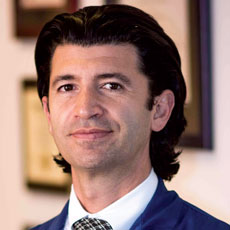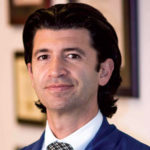
With as many as 444,000 patients dying each year due to medical errors (just behind heart disease and cancer), preventing such incidents is a high priority for long-term care providers. One of the leading causes of such deaths – an estimated 60,000 each year – can be attributed to pressure ulcer wounds (a.k.a. bedsores). There are some simple strategies nursing home administrators and clinical directors can take to help reduce them.
One of the chief causes of ineffective care of wounds is simple communication – or the lack thereof. When asked to select contributing factors to patient care errors, nurses cited poor communication with physicians. Nurses often feel intimidated to ask questions of physicians to clarify orders. At my practice, Skilled Wound Care, our physicians have implemented a communication log, where, in effect, all patient care is written in a formal communication to reduce errors. Another policy to reduce errors is to make sure members of a healthcare team are formally introduced to one another, giving them an opportunity to discuss the course of patient care. Nurses are encouraged to speak up if they have concerns about the plan.
The second easy and effective way to reduce medical errors is to create checklists. In his very insightful book, “The Checklist Manifesto,” Atul Gawande demonstrated that the use of checklists in an operating room reduced surgical complications by 36% and surgical deaths by 47% in the eight hospitals studied. Checklists are an important tool in the airline industry, where pilots use checklists for almost each event on a flight.
Does your facility have a checklist for important patient care events? In the nursing home, the med pass is an important process where a checklist can help reduce errors by a significant degree. One recommendation for the med pass would be to create a checklist to ensure the patient is given: the right medication, the proper dosage at the indicated time, a specific manner or route and have the relevant documentation.
The last area where you can reduce medical errors is through proper education of staff to increase competency. We have found the more we educate our own doctors and the nursing staff at our facilities, the more we can reduce the incidence of pressure ulcers and improve patient care. It is estimated that 60,000 patients die each year as a result of pressure ulcer wounds (aka bedsores). They are staged — not graded — according to specific criteria regarding their depth.
Even though bedsores are fairly common, so too are staging mistakes. When the caregiver erroneously assigns a numeric stage when there is no visible wound bed, the patient does not receive proper treatment and the wound worsens leading to a vicious cycle of mistreatment. Because the treatment protocol is based on which stage the wound is in, understanding the nuances are critical to the healing process. Failing to do so may cost the patient his or her life and could constitute medical malpractice.
Here are some important practices for pressure ulcer treatment in a nursing home:
- Key to treating wounds in general is to keep the skin dry and the wound moist to promote tissue health and viability. Wounds that are allowed to dry prevent them from healing.
- Keep the wound covered at all times.
- Dressing changes for most wounds should be done on a daily basis or more often as needed. A wound needs the opportunity to establish a microenvironment of healing. Care must be taken when performing dressing changes to avoid damaging adjacent skin.
- For wounds that are draining heavily, sponge the excess moisture to facilitate healing and decrease the risk of injury to the skin around the wound.
- Wounds that are on the dry side should have a dressing that promotes adequate wound moisture
- For those with circulatory problems and diabetes, make sure to check circulation as blood flow is critical to healing
Board-certified general surgeon Bardia Anvar, M.D. is medical director of Skilled Wound Care, which services nursing facilities, patients and health plans throughout the United States for wound care. He is the author of “Mastery of Skin Wound and Ostomy Care.”




